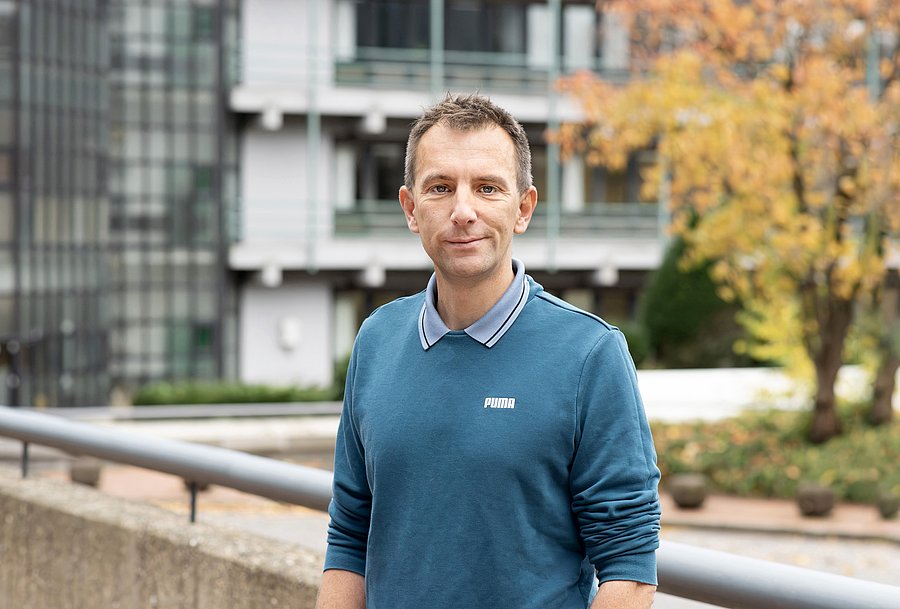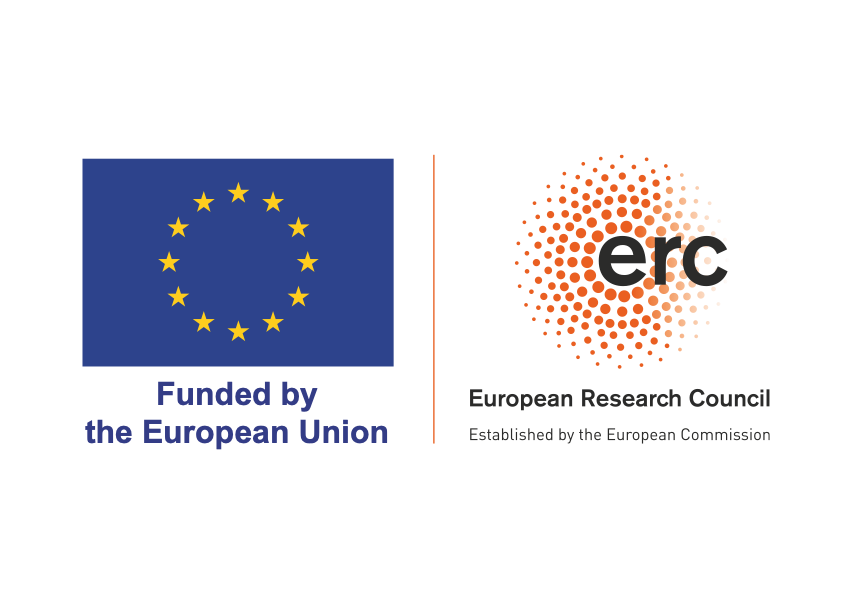High-performance computing
First ERC Consolidator Grant at the BUW: Award for Wuppertal particle physicist

Dr Jacob Finkenrath and his LEEX project, funded by the European Research Council (ERC), started at the University of Wuppertal in October // Photo Friederike von Heyden
Jacob Finkenrath's LEEX project (Lattice QCD simulations at the dawn of European EXascale computing) is based in theoretical particle physics. The scientist, who has been at the University of Wuppertal since 1 October, is developing new algorithms, i.e. methods for carrying out certain simulations on the latest supercomputers. These simulations provide an important basis for a better theoretical understanding of the properties of protons and neutrons, the building blocks of atomic nuclei.
Physicists summarise their knowledge of the fundamental building blocks of the universe and their interactions in the standard model of particle physics. A central component of this is quantum chromodynamics. It describes the force by which the smallest particles known to us, quarks, can combine with the help of gluons, for example, to form protons and neutrons, known as hadrons. The problem: because they are firmly bound together by the strong force, quarks and gluons have never been observed in isolation in experiments. A key challenge is therefore to predict the properties of these bound particles from theory as accurately as possible.
Goal: calculate as precisely as possible
"In order to track down the quarks and gluons, we simulate their behaviour in theoretical particle physics using supercomputers. To do this, we map the model of quantum chromodynamics onto a space-time lattice, which brings us to my field of work of lattice quantum chromodynamics. We can then simulate the behaviour of particles and forces on the lattice. For good predictions, we naturally always want to calculate as precisely as the state of the art allows," says Finkenrath. This is where he comes in with his LEEX project. In order to achieve this with the help of the latest generation of supercomputers, the calculation methods in lattice quantum chromodynamics must be optimised and further developed.
The most powerful computer in Europe at the moment, "Jupiter", is located at the research centre in Jülich. It is the first European supercomputer in the exascale class to achieve a computing power of more than one trillion operations per second. "In order to be able to calculate our tasks with this computer, the algorithms and software solutions must be designed in such a way that they utilise the available computing resources as efficiently as possible," explains Finkenrath. The LEEX project is also about making these solutions for high-performance computing flexible and scalable so that they are not only applicable to Jupiter.
Two central challenges
The working group faces two key challenges when developing these new processes. The first: "For the underlying space-time grid, the smaller the boxes, the more accurate the result, but the more complex the calculation. Previous calculation methods reach their limits when it comes to simulating the strong interaction of the particles at ever finer grid distances. The simulation freezes and the programme can no longer generate enough data for a more precise prediction," explains Finkenrath.
He describes the second challenge as follows: "In some simulations, you want to measure how strongly particles interact with each other over different distances. But the greater the distance, the weaker the signal and the stronger the noise, i.e. the randomness. It's like trying to understand a quiet whisper while there is increasingly loud background noise. You can then hardly recognise the important information."
The new methods developed in LEEX should solve both problems better and thus also help to make theoretical predictions about the behaviour of elementary particles more precise. "In the long term, the results could contribute to a better understanding of the strong nuclear force and fundamentally accelerate simulations in particle physics," summarises Finkenrath.
More background: ERC Cosolidator Grant
In the last funding round, 2313 project proposals were submitted, of which just over 14 per cent (328) received funding. For the Consolidator Grant, researchers initially receive funding totalling 2 million euros. The money is made available over a period of five years .
The Consolidator Grant is aimed at excellent researchers in the phase of consolidating their scientific independence and establishing their own permanent research group. Researchers of any nationality who are 7 to 12 years after their doctorate can apply for the grant.
Further facts, figures and background information: https://erc.europa.eu/news-events/news/erc-2024-consolidator-grants-results (ERC press release)

